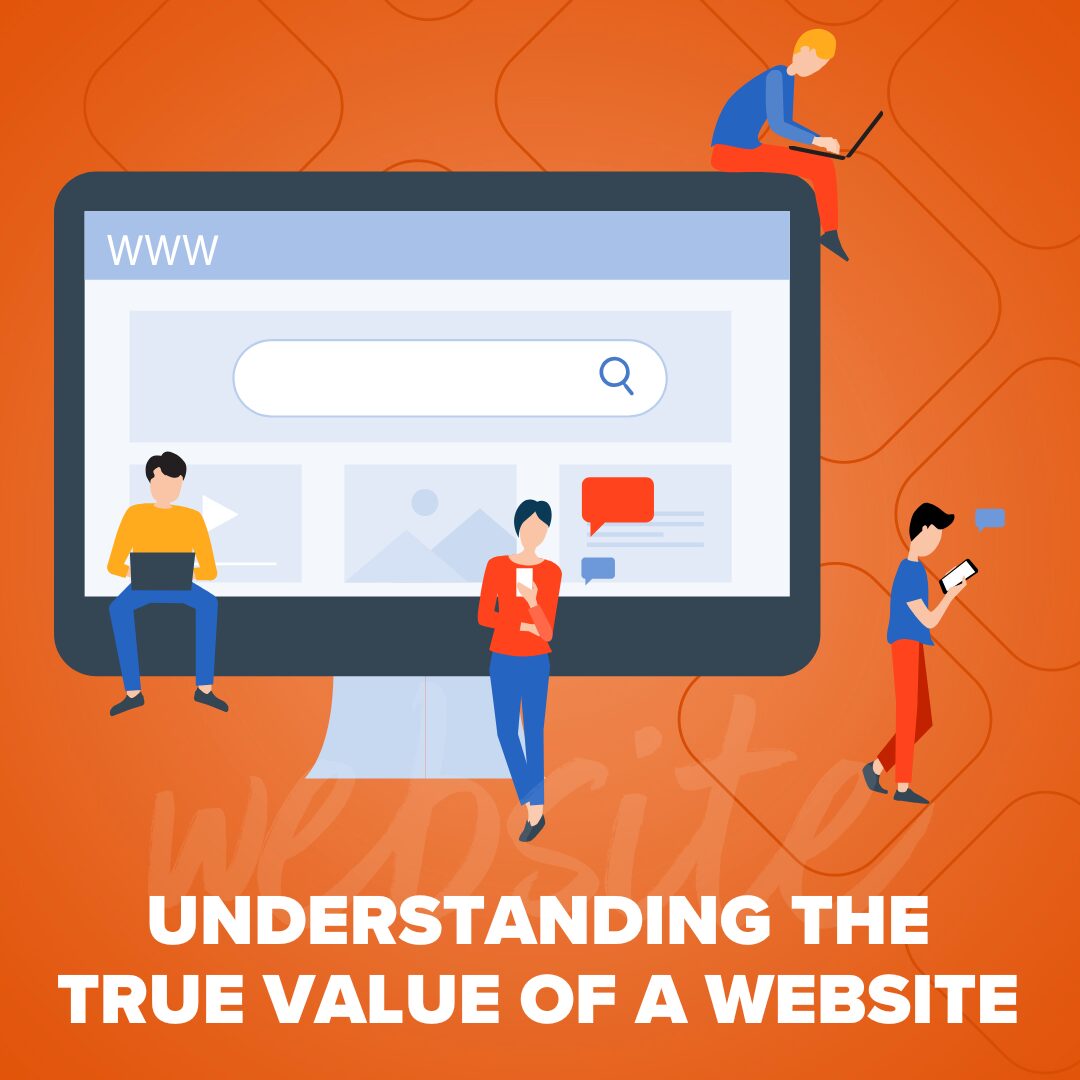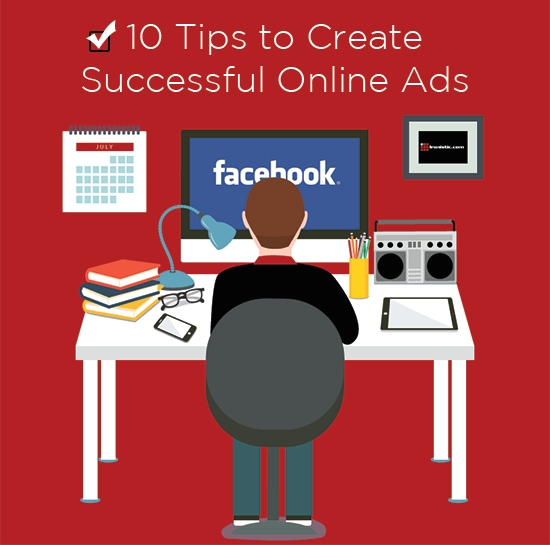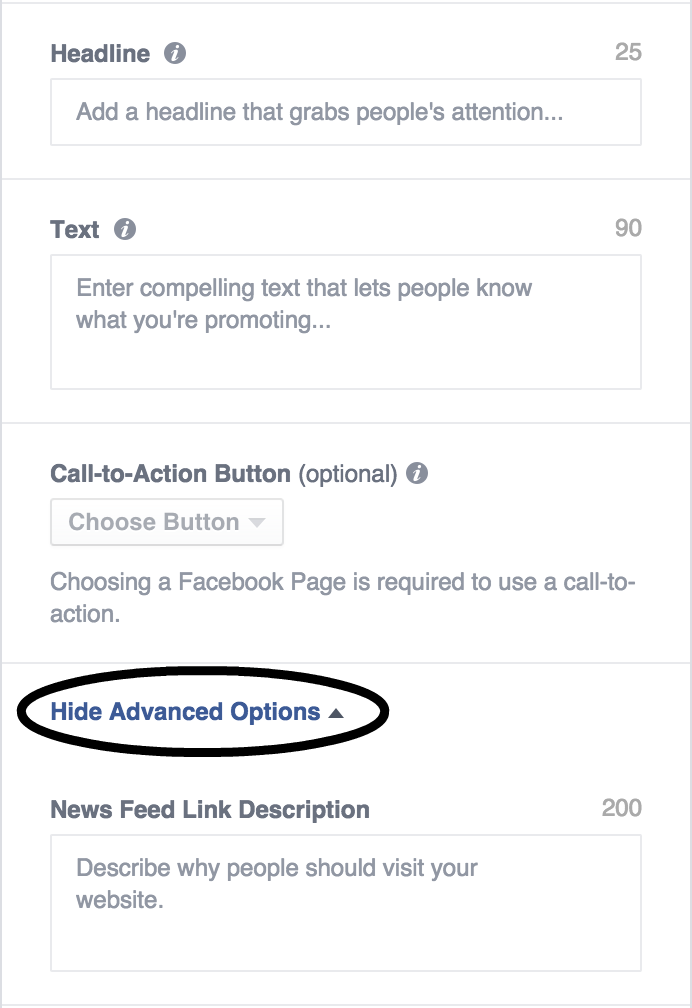
Understanding the True Value of a Website
Your website isn’t just a pretty online brochure. It’s an investment, a 24/7 salesperson, and the heartbeat of your online…
Read More
Whether it’s on AdWords, Bing Ads, Facebook, or LinkedIn, the basics for creating a winning online advertisement are pretty much the same. We’ve put together our top 10 tips for how to advertise online and ensure that your online ads lead to real conversions. So, read on!
You’ve heard it before, but it’s true. Before you start your campaign, set some measurable goals that you’re trying to hit with your campaign. The keyword in that sentence is measurable. Don’t just say, “I want to get more Twitter followers.” Specify how many you want to get within that timeframe. More on that in Hannah’s post, Business Objectives and Marketing Goals. Hint: Keep Them Measurable!
There are a ton of places you can advertise online: through Google AdWords (and even that is pretty broad – you can advertise on Google itself or their hundreds of partner sites), on Bing/Yahoo, on social media, or on third-party websites. Do some research on your target audience and see what sites they visit and what their online behavior is like. If they’re not on social media, it’s probably not best to run Twitter ads. Conversely, if they’re millennials, Facebook might be more effective than LinkedIn. Get to know your potential customers and then advertise on the platform that’s appropriate for them.
When you’re going to create your ad, there are generally two types of ads: pay-per-click (PPC) or cost-per-impression (CPM).
So which one should you use? Well, that depends on your campaign objectives. We recommend PPC when you are trying to increase sales or drive more traffic to your site. That way, you only pay when someone actually visits your site. CPM, on the other hand, is great when you’re trying to raise brand awareness or you have a new product or business that no one knows about (yet).
Tip 2a. Along with using the right platform, you can further reach your audience by targeting by location, industry, behavior, demographics, interests, and more. For example, Facebook lets you target by location, age, gender, language, interests, and behaviors; LinkedIn lets you target by company, job title, school, field of study, degree, skills, and groups. Be sure to explore those options in whatever platform you choose to use.
Here at Ironistic, we’re fans of K.I.S.S. – keep it simple, stupid. And it’s true – your ad should be clear, easy to read (no fancy industry jargon), and tell people what you want them to do. Don’t include unnecessary information (and in fact, most ads have character limits that prevent you from doing just that) about your company, your mission, or anything like that. Just focus on what the goal of the ad is going to be – whether that’s getting likes to your Facebook page or getting people to buy your product – and make sure everything in the ad directly relates to that goal.
We always suggest creating multiple ad variations, which basically means that you’re creating the same ad (usually within the same ad group), just worded a bit differently each time. So for example, if you’re getting people to sign up for your newsletter, you might have two ads that look like this:


The great thing about using different ad variations is that you can see which ads are doing well and which aren’t. Then, you can pause ads that aren’t performing as well and create additional ad variations of ads that are doing well (more on that in tip #9).
Out of these 10 tips, this is probably the most important. Don’t assume that whoever is seeing you ad will know what to do – tell them! Good examples of calls-to-action include:
To make your ads even better, create a specific landing page that you can send users to where they can complete the desired action. For example, in tip #4, we want people to sign up for our newsletters, so we’re not going to send them to our homepage and have them search through it to find the newsletter sign-up box. Instead, we would want to create a new page on our site with where people can get more information about our newsletter with strong calls-to-action and a big newsletter signup box. This is especially important in Google AdWords, where the rank of your ad is based on how relevant your landing page is.
Tip 6a. Use easy-to-remember links. www.example.com/newsletter-signup is a lot easier to remember than www.example.com/newslettersignup43840-38402. Where applicable (Google AdWords, for example), you can set one URL to display in your ad but take users to a different URL (your landing page). So for example, the display URL in this ad is ironistic.com, but users who click on it will actually be directed to https://www.ironistic.com/digital-marketing-services, a specific landing page that we created especially for this ad.

Trust us, everyone can tell the difference between cheesy stock photos and real company photos. Including a real picture adds a personal touch to your ad. Think about it: how many ads have you seen with overly happy, perfectly well-dressed people crowded around a computer? Been there, done that. But a photo of a few people in your office wearing company swag is sure to catch people’s attention.


Most online ads have character limits that sometimes make it frustrating to get the message that you want into that tiny text box. Hence, tip #3. But what you can do is utilize all available text fields in the ad.
For example, on Facebook ads, there’s an option to include a News Feed link description where you have 200 characters (!) to include additional information that maybe you couldn’t fit in the headline or text. However, you won’t see that option unless you click on “Show Advanced Options.”
Similarly, in Google AdWords, you can include callouts and site link extensions that highlight additional information about your business. So be sure to explore the different ad options if you’re looking to include more information.
One of the worst things you can do when you set up an ads campaign is just let it run and then check on it only when it’s over. You should always be optimizing your ad and seeing what improvements you can make. And because you’ve already set up multiple ad variations (tip #4), you can go through your running ads and see what strategies work best. Maybe for your target audience, it’s better to include the call-to-action in the headline rather than in the ad text. Or maybe they prefer image ads over text ads. This is where you can use quantitative data for each ad and make the appropriate changes for ads that aren’t doing as well.
For the ones that aren’t getting you as many conversions, you can go through and see what can be improved: maybe you need a stronger call-to-action, or maybe your ad copy is too confusing. Or, you can just decide to pause the ads that aren’t doing as well and instead choose to allocate more money towards the ones that are.
Go back to those goals that you set in tip #1 and see how you did. Did you hit all of your objectives? What could you have done better? If your campaign was successful – great! Now you can repeat it in the future. If not, see what kinds of improvements you could have made. Maybe go back to the drawing board and re-evaluate your campaign goals, or do some more research on your target audience and find out more about their online behaviors so that you can target them better next time.
There are currently 6 responses.
August 2, 2019
I liked how you mentioned that you can go through your running ads and see what strategies work best. My daughter is wanting to start her own business and she will need some help with the marketing aspect, so these tips have been really helpful. We will look into contacting service that can help us professionally and start from there to be able to succeed.
May 7, 2019
I really appreciate your post and you explain each and every point very well. Thanks for sharing this information
March 18, 2019
Thanks for sharing this amazing article about advertising online It help me to promote my business.
January 2, 2019
thanks a ton for sharing a very interesting post.
September 14, 2017
Thanks for these tips on online advertising. Got a good article after so much searching. The information is very useful and helpful for me. Will look forward to more of such posts.
June 3, 2017
Love your tips! I agree with you, Looking forward to seeing your notes posted. The information you have posted is very useful. Keep going on, good stuff.